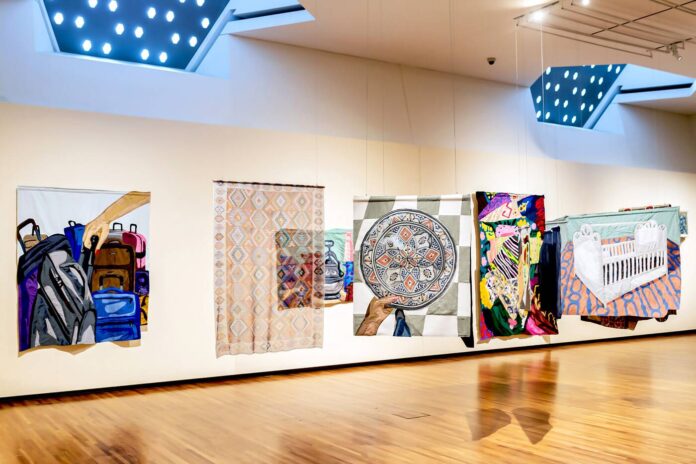The Aga Khan Museum’s newest exhibition, Rumi: A Visual Journey Through the Life and Legacy of a Sufi Mystic, opens on May 13 and is a glorious ode to one of history’s most revered poets and Sufi mystics.
At some point we all came across Rumi’s poetry on Instagram and other social media. Excerpts from his soulful work have managed to influence our generation even though they were written centuries ago.
The exhibition at the Aga Khan Museum is a testament to why Rumi’s work still matters and the power of art to shape life across time and space.
It doesn’t matter whether you are familiar with Rumi’s work or not, the experience of witnessing his life and legacy through this collection is an exciting and thought-provoking journey. Pieces for this exhibition have been brought together from around the world, including the Louvre in Paris.
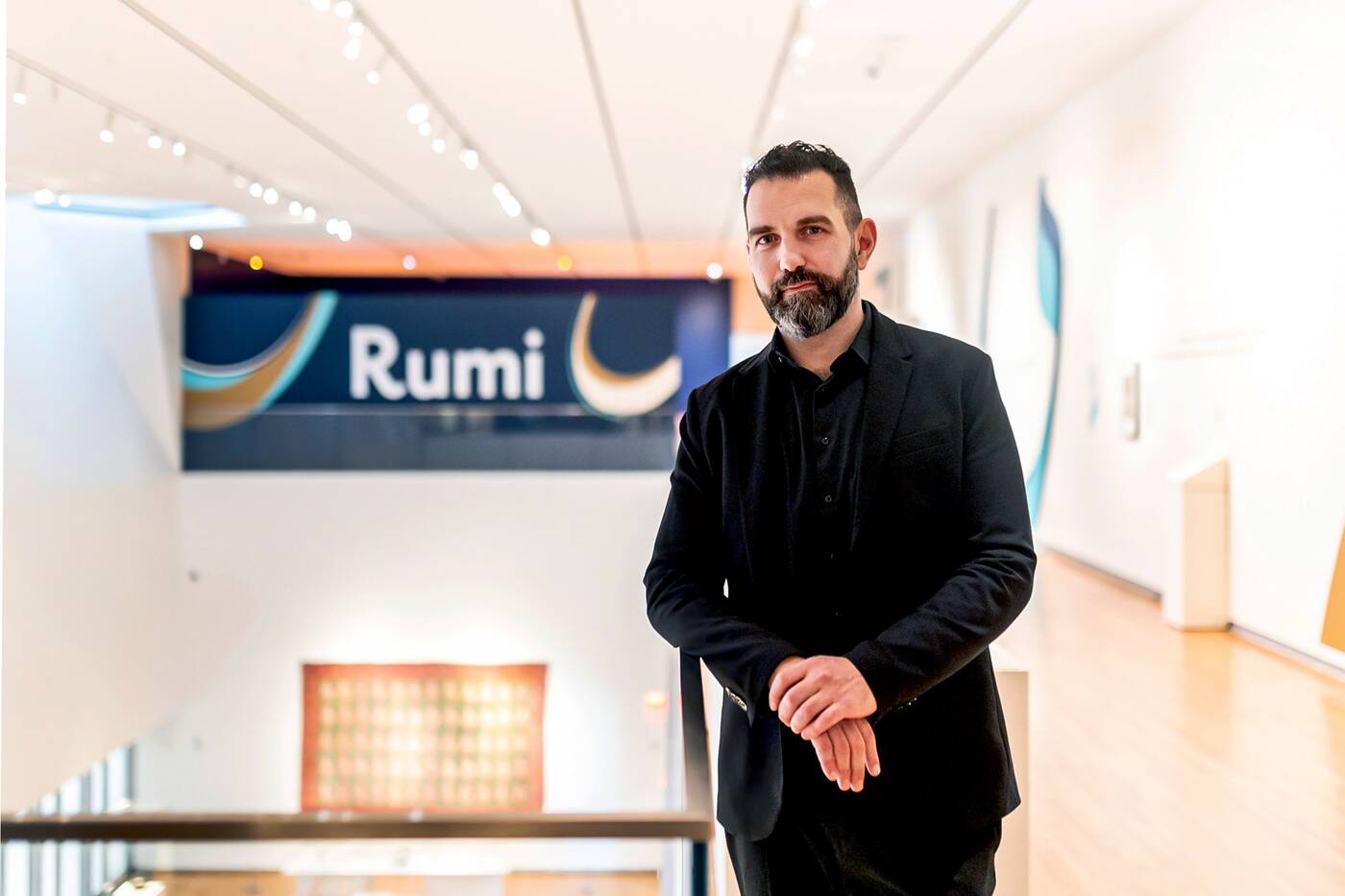 I spoke to Michael Carter-Arlt, the exhibit’s lead developer and project manager, to understand why Rumi remains such an influential global figure today.
I spoke to Michael Carter-Arlt, the exhibit’s lead developer and project manager, to understand why Rumi remains such an influential global figure today.
“I think Rumi remains relevant because we live in a world where forces far beyond our individual control seek to separate and divide us,” Cartier-Arlt said.
“There are many ways we can look around and see that happening all the time and Rumi’s message is really about how we can stay together.”
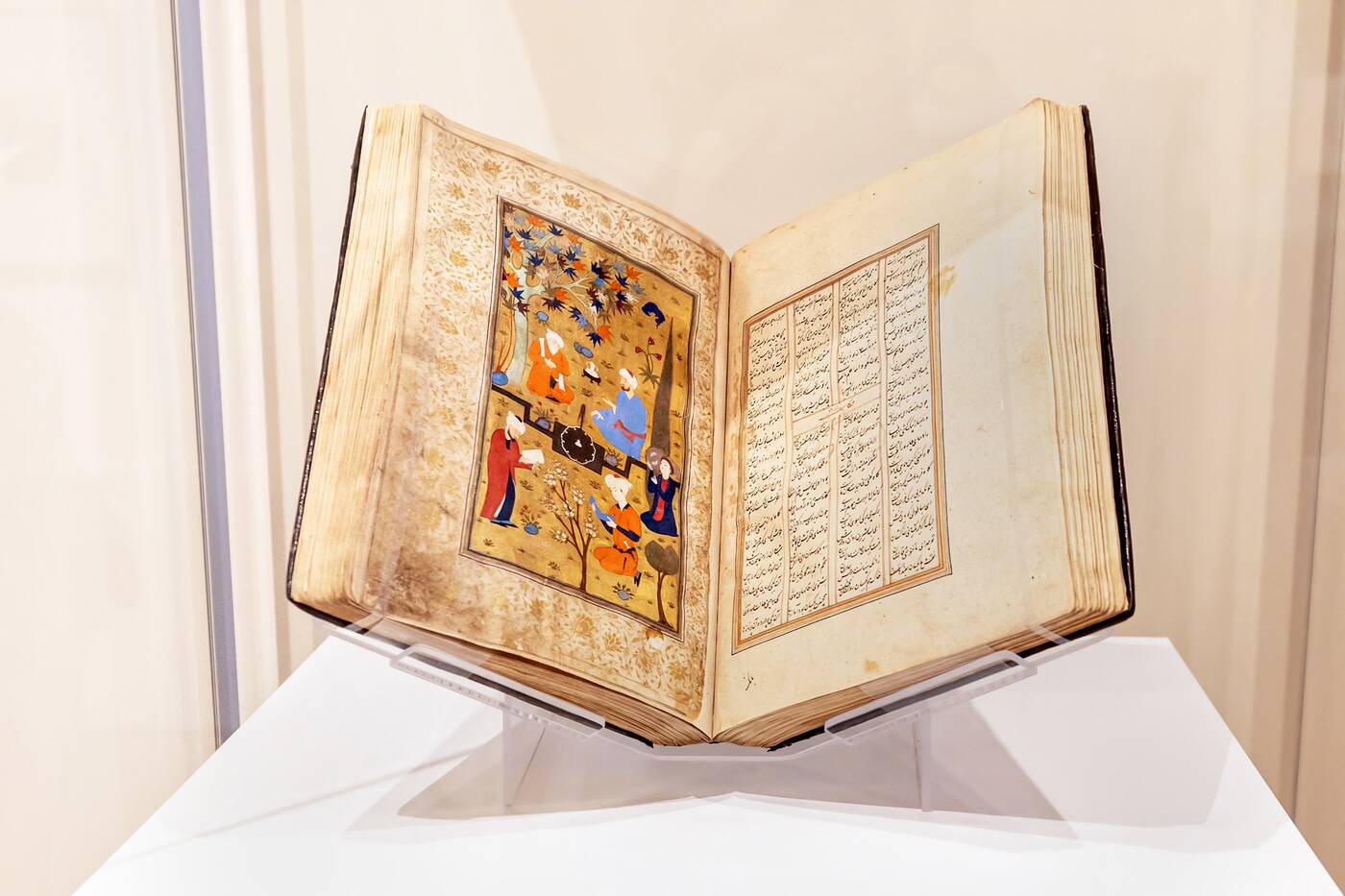 Curated to commemorate the 750th anniversary of Rumi’s death, the exhibition is divided into three main parts: ‘The Historical Rumi’, ‘The Visual Rumi’ and ‘Rumi in Translation’.
Curated to commemorate the 750th anniversary of Rumi’s death, the exhibition is divided into three main parts: ‘The Historical Rumi’, ‘The Visual Rumi’ and ‘Rumi in Translation’.
Each section offers relics, manuscripts and other artifacts that were part of Rumi’s life and history at a specific point in time. The exhibition’s attempt to present an authentic and intimate account of Rumi’s illustrious life is phenomenal.
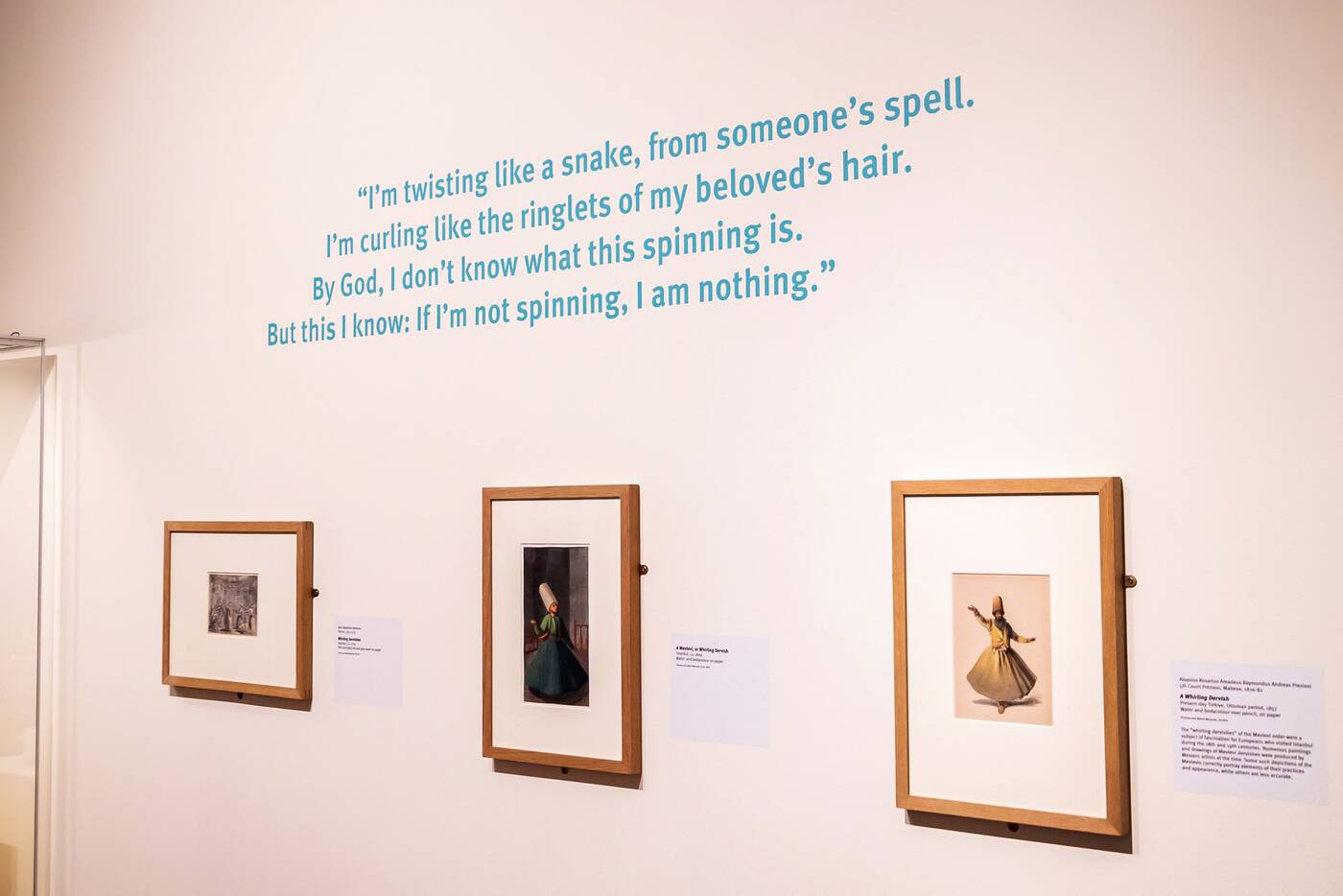 The show offers a deeply personal understanding of the poet’s inspirations, his ideologies and the sense of displacement he carried with him throughout his life.
The show offers a deeply personal understanding of the poet’s inspirations, his ideologies and the sense of displacement he carried with him throughout his life.
Rumi’s early life was marked by frequent trips with his family for various reasons, which was often reflected in his poetry.
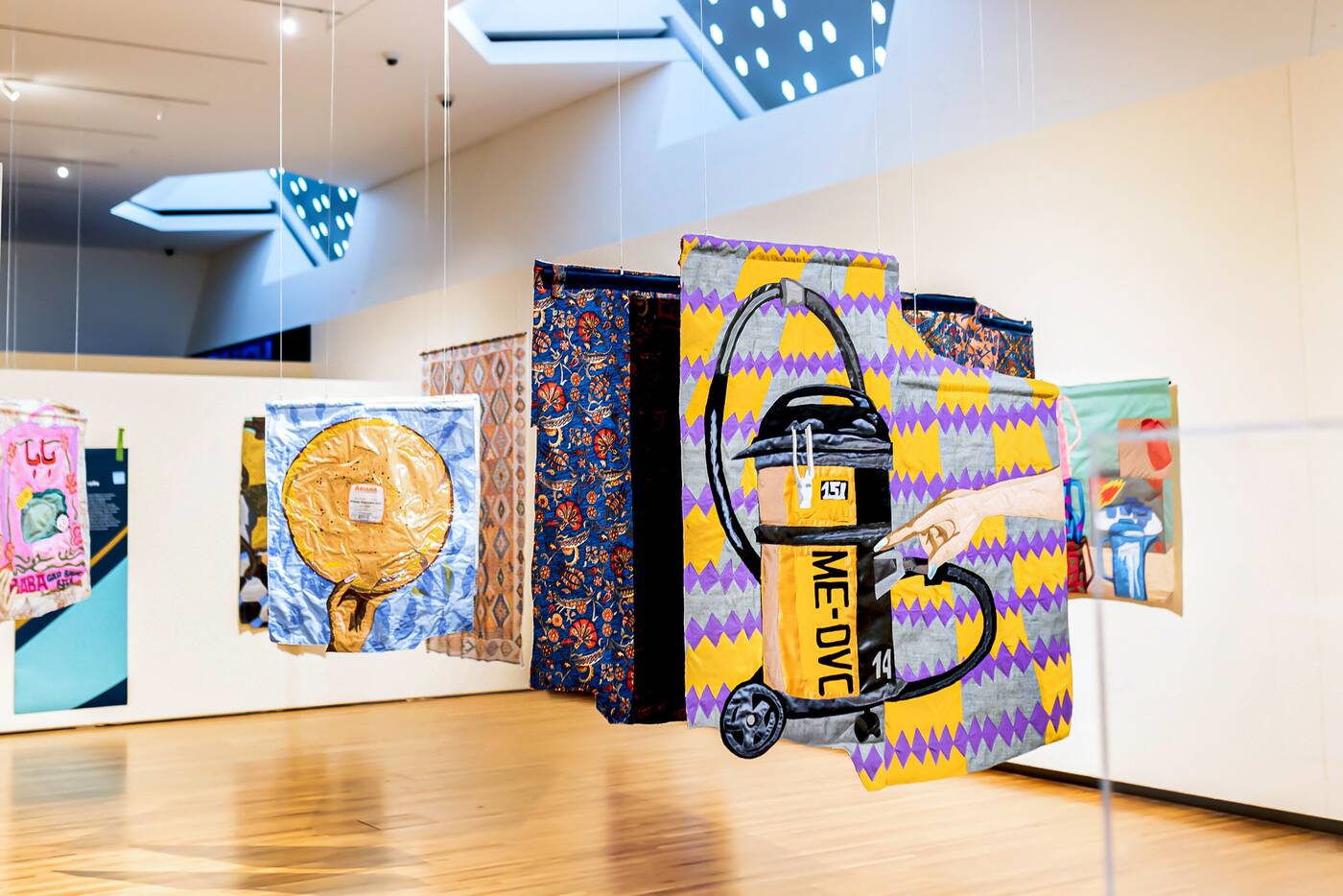 One of the most unique parts of the exhibition is the work of contemporary artists inspired by Rumi.
One of the most unique parts of the exhibition is the work of contemporary artists inspired by Rumi.
In the exhibition, Hangama Amiri, Simin Keramati and Erdem Taşdelen present their installations that offer new interpretations of Rumi’s work.
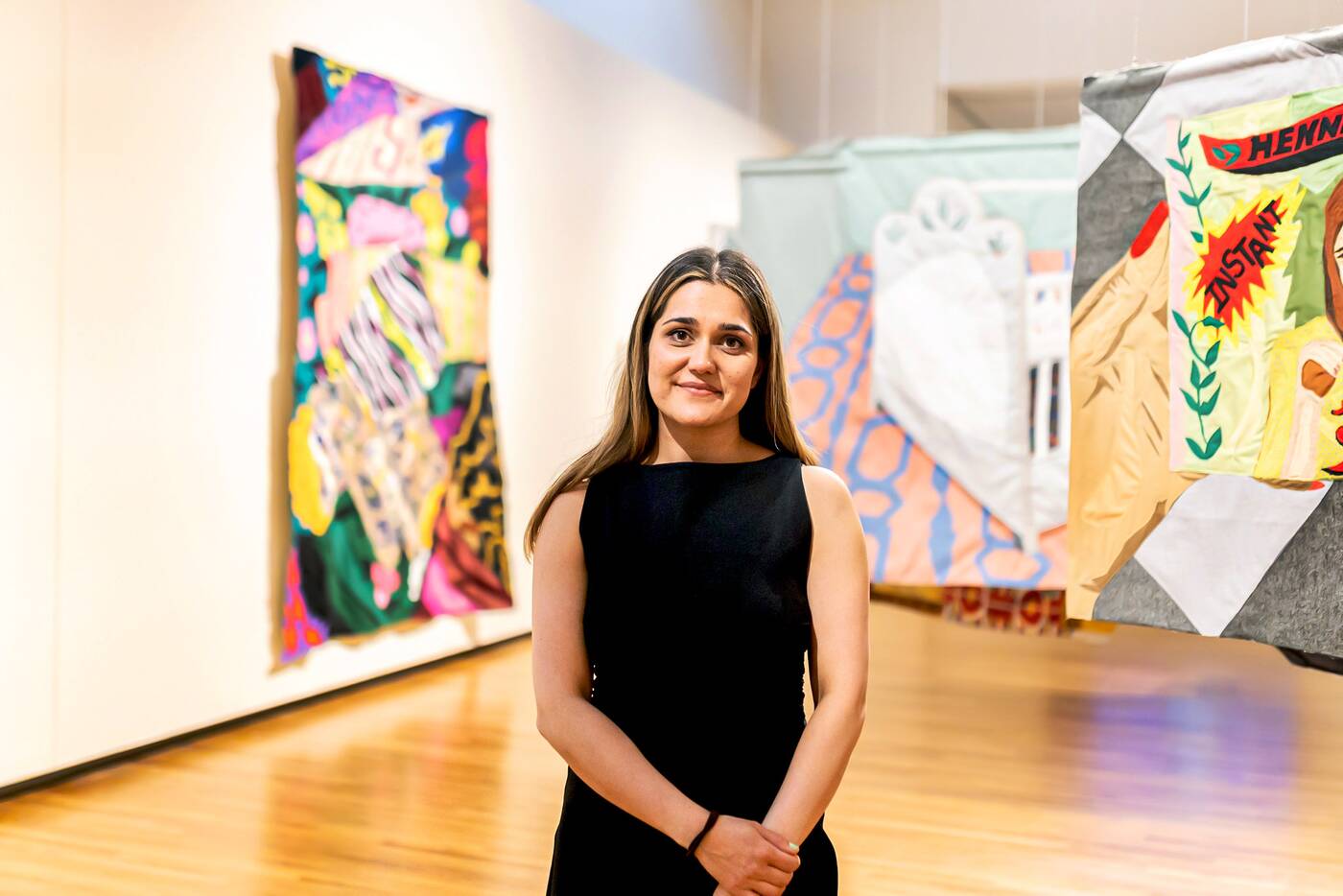 Working primarily with fabrics and textiles from countries such as Afghanistan and Pakistan, Hangama Amiri, an Afghan-Canadian artist, seeks to use everyday objects to capture displacement, memory and notions of home.
Working primarily with fabrics and textiles from countries such as Afghanistan and Pakistan, Hangama Amiri, an Afghan-Canadian artist, seeks to use everyday objects to capture displacement, memory and notions of home.
Her installation Distance Between Homes is a philosophical exploration of the diaspora.
“Memory is imperfect, just like cloth,” Amiri said, which is why she enjoys sculpting cloth to capture the essence of fleeting experiences that leave lasting impressions.
 Although she has moved frequently in her life, Amiri’s work reflects Rumi’s sense of displacement.
Although she has moved frequently in her life, Amiri’s work reflects Rumi’s sense of displacement.
Her haunting artworks stand out in the exhibition for their exquisite ability to capture nostalgia and a sense of lingering sadness.
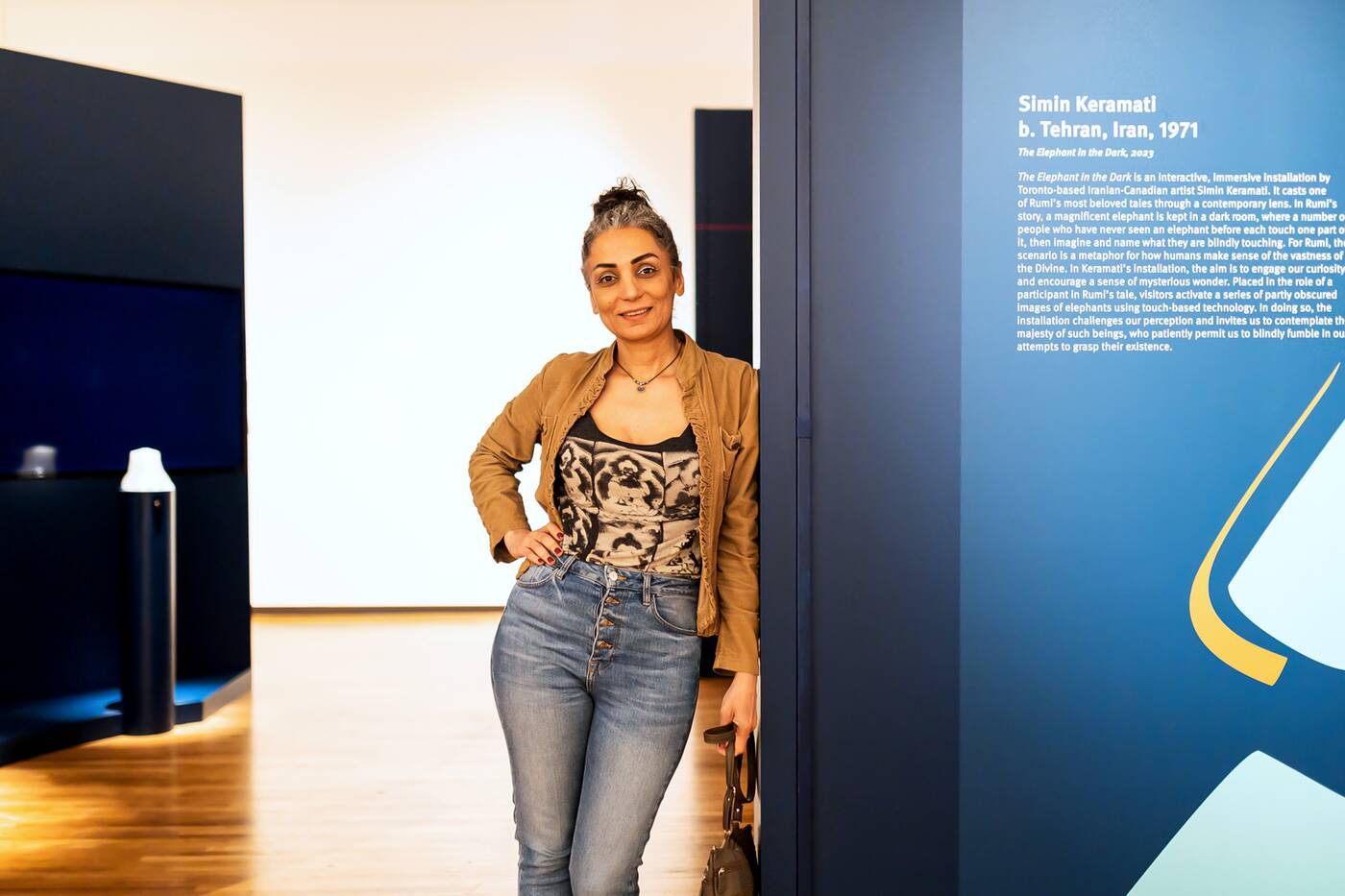 Multimedia artist Simin Keramati’s interactive installation “The Elephant in the Dark” is a distinctive interpretation of a poem of the same name by Rumi that emphasizes the importance of prioritizing different perspectives.
Multimedia artist Simin Keramati’s interactive installation “The Elephant in the Dark” is a distinctive interpretation of a poem of the same name by Rumi that emphasizes the importance of prioritizing different perspectives.
 Keramati has a lifelong association with Rumi’s work. “He was always there for us,” she said, recounting how she read and drew inspiration from Rumi’s work throughout her childhood.
Keramati has a lifelong association with Rumi’s work. “He was always there for us,” she said, recounting how she read and drew inspiration from Rumi’s work throughout her childhood.
Keramati believes that Rumi’s imagination, ideas and wonderful sense of humor make him appealing to today’s younger generations.
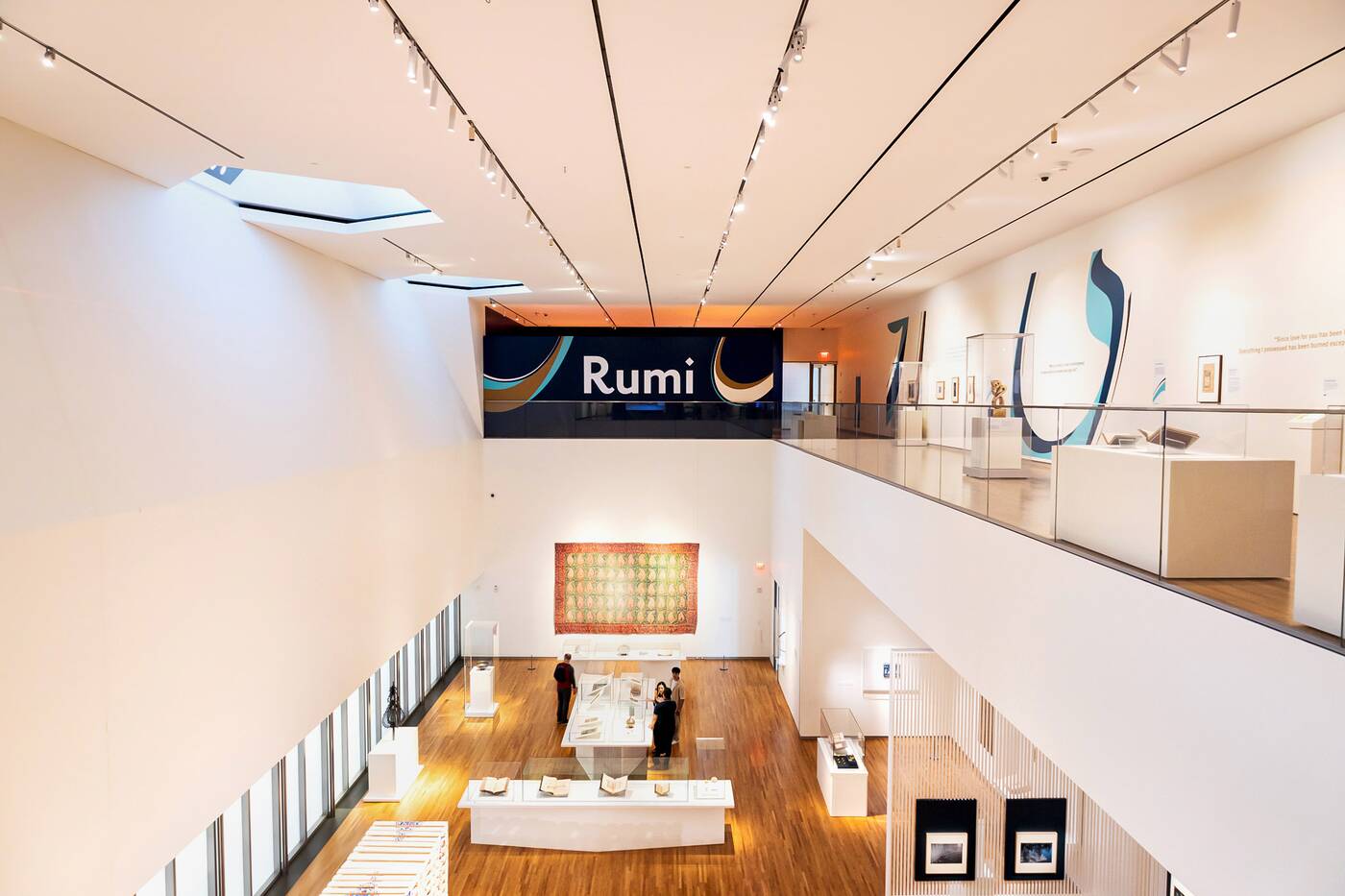 Rumi: A Visual Journey Through the Life and Legacy of a Sufi Mystic runs until October 1, 2023.
Rumi: A Visual Journey Through the Life and Legacy of a Sufi Mystic runs until October 1, 2023.
Whether you know Rumi or not, this heartfelt exhibition is an incredibly moving way to spend a few hours of your day.

















